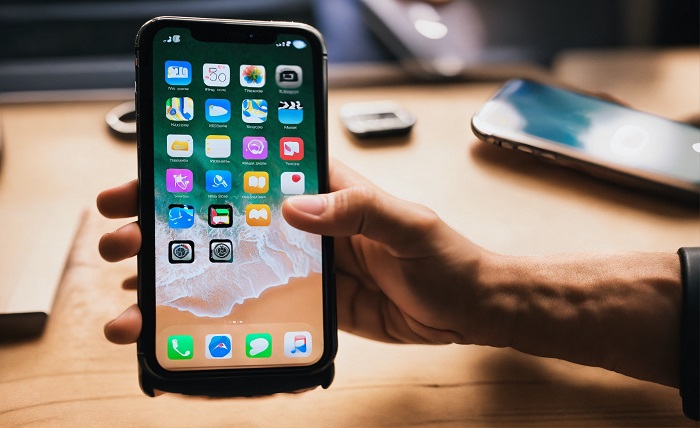A slight warming of a smartphone during use, especially while gaming or watching videos for a long time, is perfectly normal. But if the device becomes so hot that it’s uncomfortable to hold, or it heats up even when idle, this may point to a malfunction. Here’s why phones usually heat up and what you can do in each situation.
Phone Heats Up During Use
Heavy games, high-resolution video streaming, GPS navigation, bright banners of the most lucrative slotsgem casino promotions, and video calls push the processor and graphics chip to their limits. They naturally generate heat — that’s expected. But if the phone gets so hot it’s unpleasant to hold, you can reduce the strain.
Close Unnecessary Apps
Before starting a game or watching a video, close other apps. Even unused apps stay in memory and affect performance.
Lower Graphics Settings in Games
If the phone overheats while gaming, reduce resolution, turn off effects and animations in the game’s settings. Also, take breaks — every 30-40 minutes, set the phone aside for a few minutes. It will cool down, and you’ll get some rest too.
Enable Adaptive Brightness and Power Saving
Adaptive brightness adjusts the screen to lighting conditions, while power saving mode limits processor load.
- On Android, swipe down from the top of the screen to find the brightness slider (sun icon) or the battery icon, then hold it for settings.
- On iPhone, go to Settings → Accessibility → Display & Text Size and enable Auto-Brightness. To enable power saving: Settings → Battery → Low Power Mode.
Phone Heats Up While Idle
Some apps keep running in the background, checking messages or notifications, even when the phone is unused. The more apps like this, the more strain on the system — and the warmer the phone.
Check Battery Usage Stats
You can see which apps consume the most energy in settings:
- On Android: Settings → Battery.
- On iPhone: Settings → Battery, then scroll to see a list of apps with their battery percentage. Pay attention to high-consumption apps you rarely use.
Limit Background Activity
If apps you barely use consume lots of power, restrict or remove them.
- On Android: Settings → Apps → [Select app] → Battery.
You can also put apps into “sleep mode”: Settings → Battery → Background usage limits → Sleeping apps.
- On iPhone: Settings → General → Background App Refresh.
Scan for Viruses
Malware can also exploit system resources. If you notice suspicious apps with high energy usage, run a mobile antivirus scan.
Phone Heats Up While Charging
If the phone only overheats when plugged in, the reason may be an incompatible or damaged adapter, a faulty cable, or fast charging.
Check the Charger
Low-quality or mismatched adapters and cables can cause excessive heat and damage the battery.
- Inspect the cable for cracks, bends, or exposed wires — never use damaged cables.
- Try a different charger. If the issue disappears, replace the adapter.
- To ensure safety and longer battery life, use the original manufacturer’s charger.
Disable Fast Charging
Fast and wireless charging generate more heat, especially in hot weather or poor ventilation. To reduce heating:
- Remove the case while charging.
- Charge in a cool place — avoid sunny desks or hot cars.
- Use a regular charger in summer if overheating occurs.
- Don’t use the phone actively during fast charging.
On Android: Settings → Battery → Charging settings → Fast charging.
On iPhone: fast charging activates automatically with 18W+ adapters. You can’t disable it, but you can use a 5W adapter instead.
Enable Overcharge Protection
Modern phones stop charging at 100%, but staying plugged in can still warm the battery.
- On Android: Settings → Battery → Battery protection.
- On iPhone: Settings → Battery → Charging → Optimized Battery Charging.
Phone Heats Up in Hot Weather
High room or outdoor temperatures — direct sun, a hot car, or near heaters — can overheat smartphones. To protect your device:
- Avoid long use in direct sunlight. Don’t leave it on a car dashboard or hot table.
- If overheated, move it to shade or a cool place. Turning it off for 15-30 minutes helps.
- Don’t place it in the fridge — sudden temperature drops can damage it.
Phone Heats Up in a Case
Thick cases block heat dissipation. To prevent overheating, remove the case during heavy use (gaming, video playback) or while charging. If overheating is frequent, switch to a thinner case.
Phone Overheats After a Drop
Drops, impacts, or water damage can harm the battery’s internal structure, causing unstable operation. If the issue started after a fall, water exposure, swelling, or the screen lifting from the frame — turn the phone off immediately.
Don’t charge a damaged battery. Take the device to a service centre for inspection and repair.
